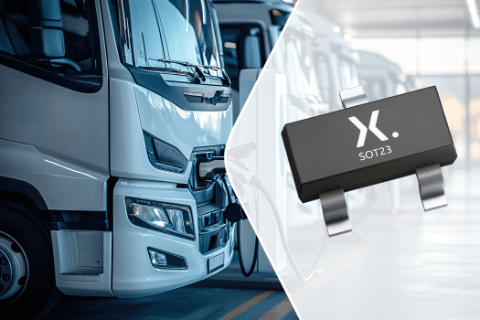First ESD diodes for 48 V car data lines help save space, reduce cost, and keep signals working—even in systems like CAN and LIN.

Nexperia has launched the first ESD protection diodes made for 48 V automotive data lines. These devices reduce PCB space and system cost, while preserving signal integrity—even at high data rates—thanks to ultra-low capacitance.
The new portfolio includes six AEC-Q101 qualified ESD diodes, built to handle higher reverse working maximum voltages (VRWM) required by 48 V networks. This marks a shift from relying on workarounds such as additional 12 V rails or combining lower-voltage diodes to protect data lines.
Electric and hybrid vehicles, unlike conventional 12 V or 24 V systems, are moving toward 48 V architectures for better efficiency. While older communication protocols like CAN, CAN-FD, LIN, and FlexRay are still in use, they now need protection suited to the higher voltages in EVs and HEVs.
To address this, the portfolio offers diodes rated at 54 V, 60 V, and 72 V VRWM. All variants feature ultra-low device capacitance—down to 3.4 pF—and come in standard SOT23 packages. This ensures compatibility and maintains signal integrity for protocols like CAN-FD.
Some of the key features of the ESD protection diodes include:
- First ESD diodes designed specifically for 48 V automotive data communication lines
- Protects systems against electrostatic discharge (ESD) events
- Helps save PCB space by removing the need for extra components
- Reduces system cost by eliminating workarounds like 12 V rails or parallel diodes
- Maintains signal integrity even at higher data rates
- Supports legacy automotive communication standards like CAN, CAN-FD, LIN, and FlexRay
- AEC-Q101 qualified for use in automotive environments
These new ESD diodes are aimed at helping automotive designers protect their 48 V networks efficiently and cost-effectively without compromising performance.







